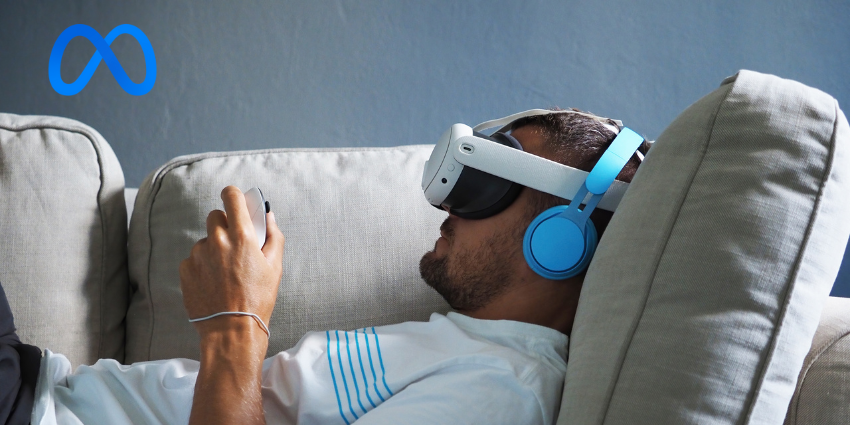Recently, XR Today caught up with Shawn Frayne, CEO and Co-Founder of Looking Glass Factory, a Brooklyn, New York, based XR device start-up developing a portfolio of 3D spatial displays that allow individuals or groups of users to view and collaborate on 3D content visualisations without needing to put on AR smart glasses or a VR/MR headset.
Looking Glass Factory is developing its spatial monitors with enterprise clients and consumers in mind. “We make the only commercially available way for more than one person to see something in 3D without a headset,” remarked Frayne.
Last month, Looking Glass unveiled new products to kick off its journey. The company is now distributing 16-inch and 32-inch XR displays for enterprise and rolling out the Looking Glass Go, a more straightforward consumer display device.
The enterprise-focused Looking Glass 16” and 32” spatial displays provide a 3D computing experience that reacts in real time. A spatial computing 3D hologram can be seen by various users, regardless of their viewing angle, with tracking cameras able to show a 3D element relative to a team member’s location.
Moreover, the devices come with innovative interaction and collaboration features, such as touchless gesture control, to deliver a fresh method of spatial content interaction without relying on bulky and restrictive head-mounted devices.
The Looking Glass displays leverage the Model Viewer software, which allows teams to collaborate on FBX, OBJ, GLTF, STL, PLY, and 3MF models as interactive spatial assets. The device also has plugins for RT3D content development platforms like Unity, Unreal, Blender, WebXR, and a first-party SDK.
On the other hand, the consumer-grade Looking Glass Go allows users to replicate 2D images as spatial renderings on a smaller 6-inch display with PC and Mac support.
Frayne explained:
A lot of times, you’re in situations in retail, a design review session, or a museum, any time where you have more than one person to whom you want to show 3D content, and it’s too inconvenient to have everybody geared up. In those situations where you want to share 3D experiences with more than one person, The Looking Glass is the solution.
Frayne also notes that Looking Glass has been working on its spatial display portfolio for “over ten years now and have had commercial products for the last few years” for both individual developers and an increasing enterprise market, including Pixar and Louis Vuitton.
According to Frayne, enterprise users turned to Looking Glass because they had “challenges in wanting to show 3D content to groups of people.”
Where do Spatial Monitors fit into the XR Device Ecosystem?
With the number of spatial/XR devices emerging and increasing in variety and scope, it is essential to understand where each of the broad range of devices fits into headset ecosystems and more expansive workplace IT infrastructures.
Frayne notes:
It’s all part of this larger ecosystem that’s shifting from 2D flat interfaces to 3D spatial interfaces, some that you gear up to experience, like with the Vision Pro or other headsets, then others that you don’t need to gear up to use. They all serve a slightly different role.
Frayne also noted that VR/AR/MR headsets are great for leveraging fully immersive applications. “Those are great solutions,” he added.
However, the Looking Glass team noticed a gap in the market for its brand of 3D monitors. It should also be noted that firms like Acer are also experimenting with spatial displays.
Looking Glass’ spatial display technology is part of this new wave of an “overarching set” of human-computer interfaces that are becoming three-dimensional without the need for headsets; each technology “will serve a different role in the coming years and decades,” Frayne remarked.
Why is Non-Intrusive XR Important?
The form factor and accessibility of XR devices is an increasingly commonplace problem that XR device leaders are attempting to solve.
To achieve smart glasses ubiquity, for example, device developers are attempting to make devices as accessible and non-intrusive as possible so as many people as possible can leverage the emerging technology; at the same time, vendors want those users to wear/operate AR wearables for as long as possible.
Device usability can come in many forms, such as simple navigation and non-intrusive wearable technology. Spatial monitors from Looking Glass and others aim to solve the accessibility hurdles for users and businesses wanting to leverage AR visuals without committing to a head-mounted device.
Frayne added:
It’s just convenience. We’ve seen in the last few cycles of new technology platforms, things that are the most convenient get folks into whatever that new shift is. So convenience is king in a lot of ways.
Frayne also explained that spatial monitors give users a device that allows them to experience spatial content immediately “with friends, family, and colleagues.”
However, Frayne respects that not all use cases are ready for 3D monitors; “there are times where you do want to go through the effort of gearing up,” Frayne explained.
But the CEO notes that there will exist times when groups will want to collaborate on spatial assets in a way that is as “low as low friction away as humanly possible, and that’s where the headset-free spatial interfaces end up playing a role.”
Frayne also added:
Consider the source of this comment, but ultimately, I think a lot more folks are going to get their first taste of three-dimensional spatial experiences through this low-friction or zero-friction type of interface like what Looking Glass makes, and then from there, people can decide if they want to go in deeper and gear up to explore some of those experiences in a new way or just get more of the low friction experiences in their home and offices.
This is an interesting point. If spatial monitors pick up in adoption, the technology may be a great starting point for users to understand the value of spatial data without being put off by cumbersome devices or long-winded onboarding.
“The idea of making spatial experiences more accessible is very core to what we make in our team,” Frayne remarked.







